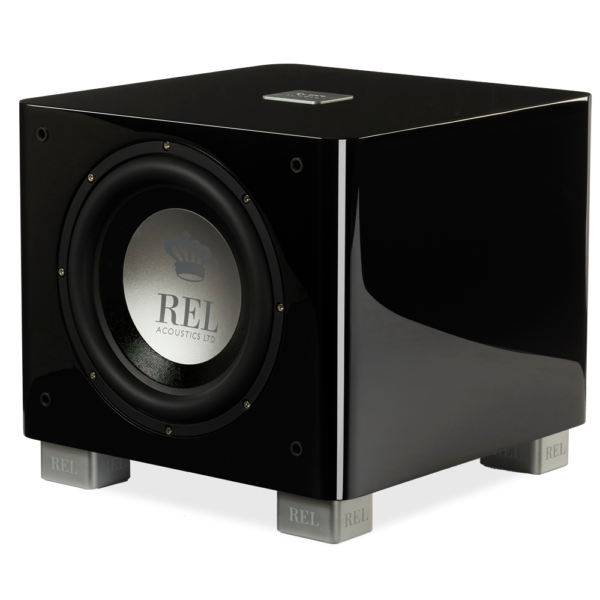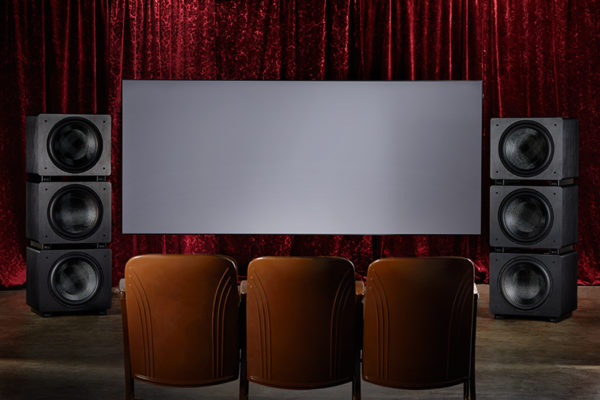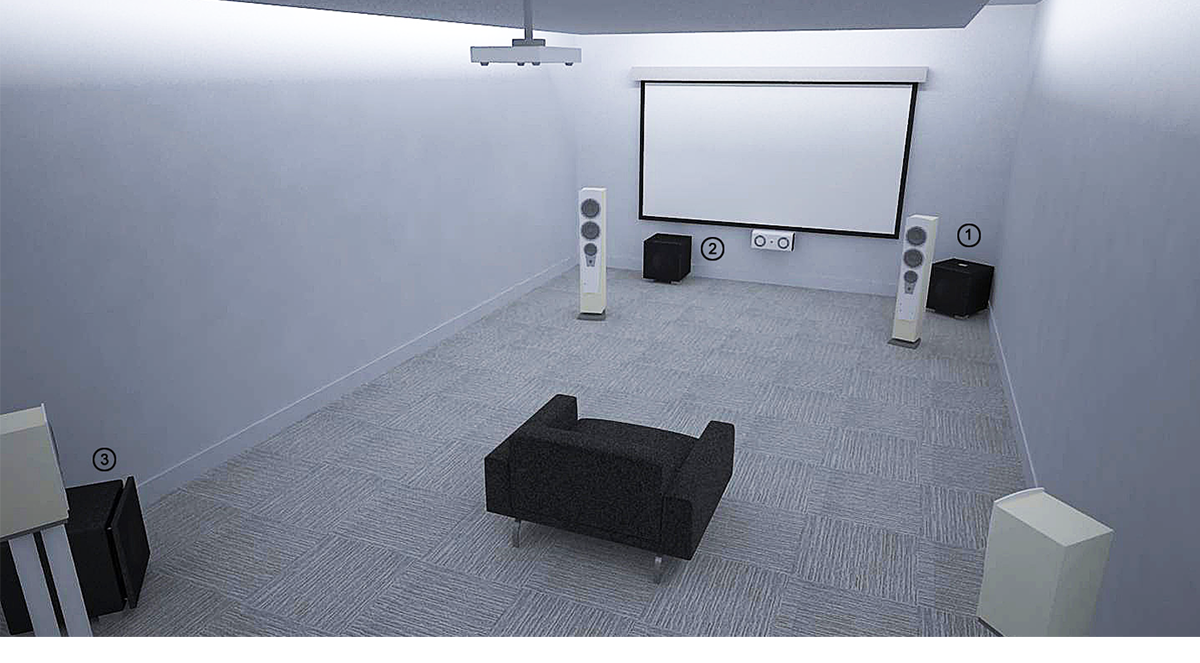Blog
REL’s New HT-3D Format
Professional Quality Theatre Just Got More Affordable
“Because when, as an industry, we endorse the use of significantly bandwidth-limited speakers for all 5 (or more) main channels, using only the .1LFE channel to deliver the bass for all channels of the movie, we lose so much of the naturally occurring space and atmospheric quality that great theatre is capable of delivering. REL 3-D restores what Dolby intended the theatre experience at home to be. Our HT-3D delivers simpler, less expensive delivery of that performance envelope.”
For the past ten years, REL’s approach to theater has focused on a technique called REL 3-D™, which is the result of using three or more subwoofers and a combination of high level plus .1/LFE inputs. With the introduction of the Serie HT, REL is now able to offer an additional building block to create even better results in theater sets.
Let’s start with what REL 3D offers and build forward from there. The origins of REL 3-D are grounded in an understanding of what professional theatre transfer studio technique uses as its basis. Dolby Laboratories, Inc., the company responsible for creating virtually every sonic technology breakthrough in the history of modern digital theatre, stipulates that Dolby 5.1 (still considered the touchstone and standard bearer of modern home theatre and the standard in which almost all DVD and BluRay discs are mastered) be truly full range. Meaning all the frequencies from 20 Hz through 20,000Hz be properly presented from EACH of the 5 main channels. The Dolby standard collides with practical reality—few of us have room or the inclination to use 5+huge and hugely expensive full range speakers in our living rooms or modest dedicated home theatres.
Unwilling to give up the immersive spatial qualities that Dolby 5.1 and its more modern iterations deliver via the use of full bandwidth channels, REL set about in the late ‘90’s delivering on the promise of Dolby 5.1(+) by adding no fewer than three (3) RELs, using our famous High Level input connected up to (1) the Left/Right Stereo Mains, (2) Center Channel and (3) Surround speakers respectively. REL 3D transforms speakers of modest size—yes, even in-ceiling speakers can be used to good effect for theatre surround in REL 3-D– and delivers deep, natural and virtually continuous bass from each channel. Why is this significant? Because when, as an industry, we endorse the use of significantly bandwidth-limited speakers for all 5 main channels, using only the .1LFE channel to deliver the bass for all channels of the movie, we lose so much of the naturally occurring space and atmospheric quality that great theatre is capable of delivering.
How best then to integrate our dedicated Home Theatre line of subs, Serie HT™, into a REL 3-D environment when they don’t feature a High-Level Input? The answer is simply and flexibly. HT delivers huge amounts of thrilling dynamics, necessary to explore the further reaches of home theatre performance, yet deletes the expensive High Level Input found on all previous REL designs to deliver this new standard of theatre bass at a budget friendly price. They’ve become hugely popular almost instantly and we thought it useful to share how our pro’s use them in REL 3-D based systems.
HT-3D Revealed, a Theatre-Centric Approach:
Our primary approach to what we now refer to as HT-3D has been refined in the field. Continuing to use a single classic REL for the center channel is the secret. So much of the atmospheric naturalness in movies relies upon having wide bandwidth coming through the center channel. At 18:56 seconds into Fantastic Beasts (and Where to Find Them) the J.K. Rowling prequel to the Harry Potter series, lies the kind of simple scene we often forget in a movie. A London street scene with pedestrians, character actors speaking, pass-throughs of snippets of conversations, an old truck rattles by; exactly the sort of scene the director uses to establish normalcy to set the contrast for the very-much-NOT-normal to ensue.
Standard/Mid system:
Using an HT/1205, for example, as the front primary .1/LFE anchor sub, a T/9i for the center channel and an HT/1003 for the rear can deliver big dynamics and intimacy in scene after scene in medium sized home theatre; the typical suburban large living room performing multiple duties found in a number of countries.
Large Scale System:
Adapting this to larger rooms and partnering speakers, upgrading to our flagship HT/1508 as the main anchor sub, an S/3 SHO for center channel and HT/1205 for the rears will deliver powerful dynamics in large rooms.
Small Room System:
Adjusting our sights to more modestly-sized rooms allows for an HT/1003 as the anchor sub, a T/5i or Tzero as the center channel and a second HT/1003 for rear.
The continuing evolution of REL’s theatre protocol to embrace the newer HT-3D standard can be seen as inclusive and delivering many of the basic benefits of full-blown REL 3D at lower cost and simpler connectivity than the original standard setting system. In doing so, it delivers much of the thrill of special effects-driven movie sound at a fraction of the cost of just a few short years ago. And were one to wish for the best of all worlds, adding the appropriate models of the new HT lineup to augment, not replace, existing classic RELs will surely add an entirely new dimension to existing REL 3-D systems.












